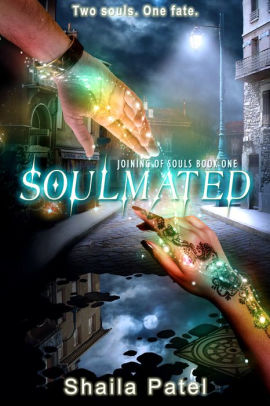A Review of Shaila Patel’s Soulmated (Month9Books, 2017).
By Stephen Hong Sohn
So, the set-up for this YA paranormal romance is super intriguing because it focuses on a supernatural ability I haven’t seen very often: the empath. Growing up, I remember there was a supervillain called Empath, who was part of the rival team for The New Mutants in the Marval Universe. Empath naturally had the ability to manipulate people’s emotions. Shaila Patel takes up some similar ideas in Soulmated, the first of a two-part series. The second part apparently has been published, but not by the same company. B&N gives us this description of the novel:
“Two souls. One Fate. Eighteen-year-old Liam Whelan, an Irish royal empath, has been searching for his elusive soulmate. The rare union will cement his family's standing in empath politics and afford the couple legendary powers, while also making them targets of those seeking to oust them. Laxshmi Kapadia, an Indian-American high school student from a traditional family, faces her mother's ultimatum: graduate early and go to medical school, or commit to an arranged marriage. When Liam moves next door to Laxshmi, he’s immediately and inexplicably drawn to her. In Liam, Laxshmi envisions a future with the freedom to follow her heart. Liam's father isn't convinced Laxshmi is "The One" and Laxshmi's mother won't even let her talk to their handsome new neighbor. Will Liam and Laxshmi defy expectations and embrace a shared destiny? Or is the risk of choosing one's own fate too great a price for the soulmated?”
The narrative is bifurcated into two first-person perspectives, one obviously given to Liam and the other to Laxshmi. For the most part, each character has very divergent goals and motivations. Laxshmi lives within what might be considered the restrictions of the model minority construct. Her mother expects her to marry within caste and class, while also focusing on a sensible career (such as being a medical doctor). Naturally, Laxshmi finds her interests going elsewhere, like exploring her talents in dance and finding a better balance to her social life. Liam’s perspective is very different, because he holds so much more information about the “world-building” rules of the fictional world. He’s super obsessed to find the one, not only because it will be an important step for his family, but also because his emotions are so wrapped up in the process. As readers discover, Liam’s been on this quest for quite some time and come up on some dead ends. The problem with this quest is that Liam must break the hearts of the young ladies he realizes aren’t the one, while he himself must wrestle with the development of the topsy-turvy emotions that come with these various courtship stratagems. Though Patel is all in with the conceit—that is, Liam’s goal to find the “one”—the narrative spends so much time with the courtship between Liam and Laxshmi that the pacing and the upward arc become muddled. Part of the issue is that Patel may be saving much of the revelations for the second book, but I found my attention meandering even with the unique world-building elements offered. In my opinion, Patel did have more opportunities to expand upon the promise of this book: the political intrigue of the “warring” empath families is little explored. Nevertheless, it’s hard to make a final judgment on the book only insofar as there is still one more installment to go.
Buy the Book Here!
Review Author: Stephen Hong Sohn
Review Editor: Xiomara Forbez
Prof. Stephen Hong Sohn at ssohnucr@gmail.com
Xiomara Forbez, PhD Candidate in Critical Dance Studies, at xforb001@ucr.edu
